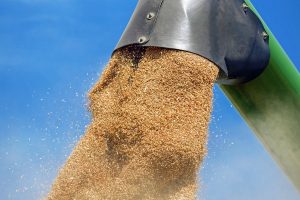The average wheat sowing dates in Serbia are moving backwards, so activities that used to be carried out in mid-October are now often carried out in November, and in some cases even in December. This trend of moving the optimal dates has been going on for ten years, although September’s rainy weather, as well as favorable conditions in October, gave farmers the opportunity to sow wheat earlier. The lack of rain in certain regions, such as the vicinity of Novi Sad, may pose a challenge for uniform germination, but it is expected that sowing at the end of October will not significantly affect the dynamics of germination compared to November sowing.
It is estimated that the share of the highest quality wheat varieties, known as improvers, ranges between 15 and 20%. Dominant varieties are those on the border between bread and basic, with a share of 40-45%, while the remaining part includes varieties of lower quality. Milan Mirosavljević, head of the Small Grains Department at the Novi Sad Institute of Crop and Vegetable Agriculture, asked for a comment. He points out that quality, declared seed, produced under controlled conditions and with guaranteed germination and weight of one thousand grains, is key to good production. However, over the past decade, the share of declared seeds has decreased from 60 to 35-40%. In addition, attic seed is now present in almost two thirds of the total production.
Cheaper diesel – better wheat cultivation
Although the production costs are high, especially when it comes to the price of diesel, farmers are forced to implement austerity measures. This often involves reduced use of fertilizers and switching to lower quality seeds. Mirosavljević notes that, despite the high costs, investments in quality seeds and proper soil analysis should not be left out. Using declared seed provides advantages such as crop uniformity and reducing the amount of seed needed, while attic seed does not guarantee the same results.

In Serbia, subsidized land analyzes are available in a large number of municipalities. This allows farmers to estimate essential nutrients in the soil, such as nitrogen, phosphorus and potassium. This analysis enables the application of optimal amounts of fertilizers and can contribute to better profitability and reduction of unnecessary costs. Mirosavljević believes that not performing these analyses, as well as the use of non-certified seeds, represent the biggest mistakes that farmers make. Failure to perform analyzes can have a long-term negative impact on crop yields and quality.
This change in weather conditions, along with economic pressures, forces farmers to prepare properly. In other words, to adapt their practices and strategies regarding sowing, seed and fertilizer use. With increasing pressure to reduce costs, investments in quality remain crucial to ensure the sustainability and competitiveness of Serbian agriculture in the future.
Source: Good morning
Source: boljazemlja.com


